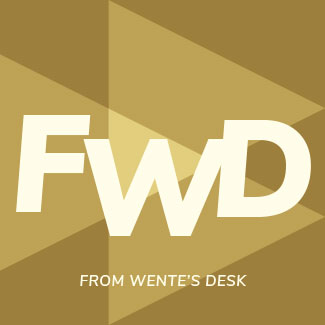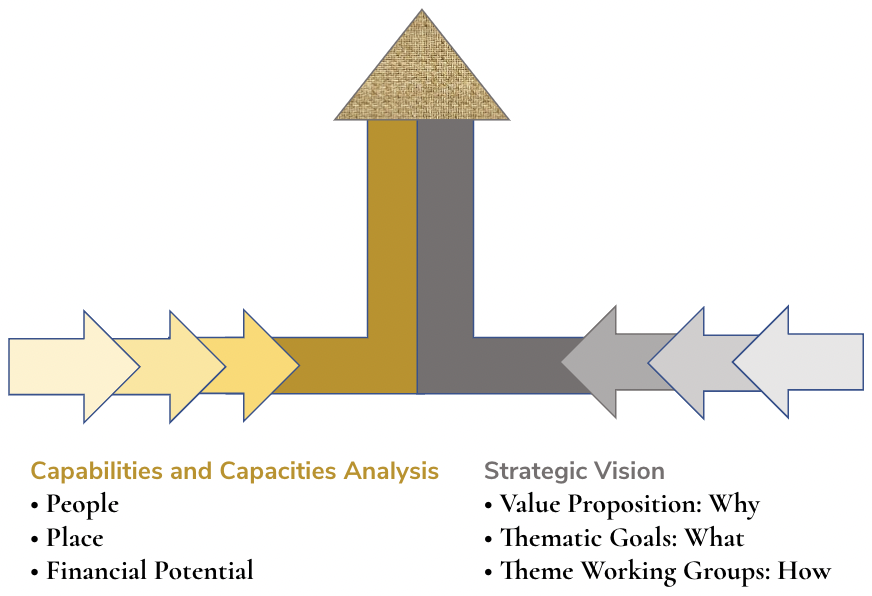Strategically addressing space needs for our third century

Anyone who has lived or worked in a college or university community knows how precious a campus can be. The academic buildings, classrooms, and library; residence halls and dining spaces; beautifully landscaped quads and towering spires. Campus places and spaces become dear to us as we live and learn in them, discover new knowledge, and make lifelong friends and mentors.
Space matters. And we as Wake Foresters cherish these places, connecting with our campus spaces and returning to them, sometimes long after graduation, to visit. I noted Wake Forest’s distinct commitment to our spaces in my November presidential address. I have learned this from you- faculty, staff, students, alumni- who have shared your stories about our campuses; from breakthroughs in laboratories to semesters abroad at Casa Artom, engagements on the quad, and memorials in Wait Chapel. These stories form a tapestry of our identity, woven together across the years and experiences of this community.
Also woven into your stories, however, are some of the challenges we face: too few common spaces for students to gather, classrooms in configurations not aligned with today’s pedagogical innovations being spearheaded by our world-class faculty, and office needs for growing academic departments, among others. These challenges are documented in the recent space utilization study conducted by SmithGroup (view the final report summary here). Moreover, the relative inflexibility of our aging buildings for renewal has made it difficult to keep up with faculty and student needs for creativity, research, and scholarly inquiry.
This combination- of a deep affinity for our shared sense of place, tied to our significant academic and student space needs, in particular on the Reynolda Campus- is why I see academic space renewal as one of my highest priorities as President.
To address our academic space needs for today and for the future, it is critically important that our strategy and vision drive our space decisions, and not the other way around. We are now deeply engaged in Wake Forest’s first University-wide strategy development process since 2007. Over the past 18 months, we have engaged together in generative and deliberative work centered on two streams of effort: an assessment of our capabilities and capacities across three core domains of people, place, and financial position; and crafting a vision for our future. And this visioning continues this spring via the effort of the strategic framework working groups, and their collection of further campus input.

Consistent with the three thematic goals articulated in our strategic framework process, our students need spaces that inspire their learning and creativity; our scholars need spaces that enable excellence in teaching, learning, mentorship, discovery, and innovation; and, collectively, we need spaces where our community can engage in the meaningful partnerships we aim to foster and nurture.
Wake Forest has been successful in addressing space needs in innovative ways, and in partnership with donors, including the construction of Farrell Hall, the renovations of Palmer/Piccolo and Salem Halls, the Worrell Professional Center renewal, and the Health and Exercise Science addition. Our past progress and success show we know how to do this. But, we have more work to do.
Overall, many of our academic and administrative spaces are like a quilt – patched together, somewhat fragmented, pristine in some places, less so in others – that we need to renew, reorganize, and transform (reweave) for our third century. I toured Tribble Hall and Scales for the first time soon after arriving here, and understand the acute and growing demands on our Math, Statistics, Computer Science and Biology programs, among others, as well as stresses on our spaces that support student advising, experiential learning, and the broad needs of our residential living-learning environment. Focusing on one building or one floor at a time will not be the solution to these significant needs. We need new options for a well-sequenced, holistic, and long-term space plan to ensure our buildings and places match the needs and aspirations of Wake Forest for today, for 2034, and beyond.
Based on data gathered in the SmithGroup space utilization study, we have taken two key steps forward. First, this past fall, I created a new governance group to focus our strategic space management efforts. The University Space Planning Group (USPG), co-chaired by Provost Gillespie and Executive Vice President Milam, ensures we are as coordinated as possible in addressing important cross-university questions and establishing best practices and shared principles for space management, allocation, and projects.
Second, we are focused on investigating how we might activate our existing real estate assets in service of renovating and renewing the Reynolda Campus core. We have engaged the architecture firm Ayers Saint Gross to work with us to develop our long-term space plan and to identify near-term opportunities that directly address our renewal goals. The first phase of our work with Ayers Saint Gross begins now, and we anticipate it will take about 6 months to complete.
This work will intentionally unfold alongside the efforts of the Strategic Framework working groups and Core Planning Team. The input and feedback gathered by these groups over the next month will undoubtedly provide us with additional insights, ideas, and possibilities that will support and strengthen our space planning effort.
Of course, there are always inevitable competing and evolving interests within Universities and Wake Forest is no different – in this work, we will have to make choices. Other universities often find the challenges inherent in doing so impossible, and unsolvable. I do not. Because this is Wake Forest.
We will preserve and enhance the Reynolda Campus core. This is our crown jewel, the nucleus of our identity, and the current and future home of our exceptional undergraduate academic experience and many of our graduate programs. I’m excited about the next phases of our work together.
Categories: From Wente's Desk
